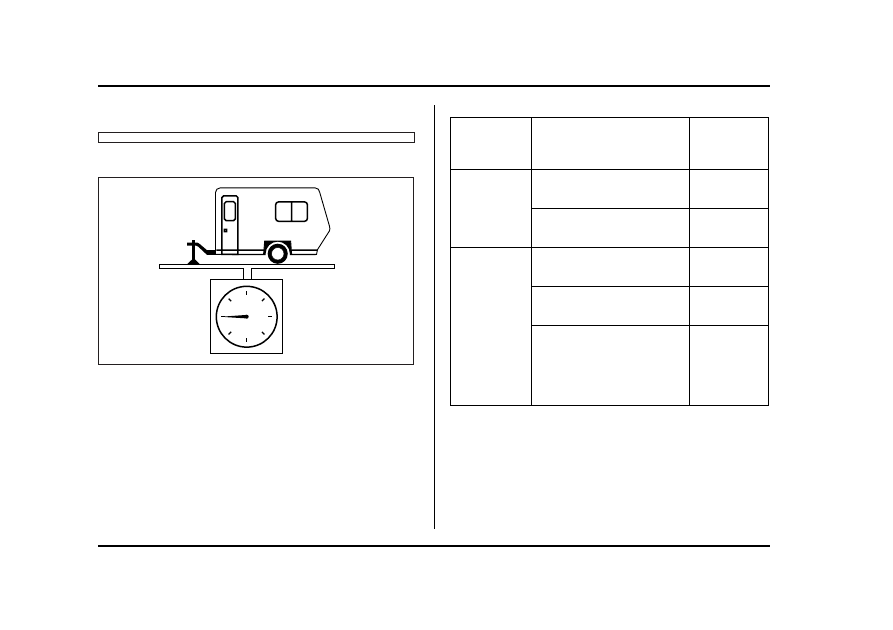Subaru Baja (2006 year). Manual - part 20

8-26
Driving tips
and trailer are acceptable.
T Total trailer weight
Total trailer weight
The total trailer weight (trailer weight plus its cargo
load) must never exceed the maximum weight shown
in the following table.
HS8016AA
Model
Conditions
Maximum
total trailer
weight
MT models
When towing a trailer with-
out brakes.
1,000 lbs
(453 kg)
When towing a trailer with
brakes.
2,400 lbs
(1,087 kg)
AT models
When towing a trailer with-
out brakes.
1,000 lbs
(453 kg)
When towing a trailer with
brakes.
2,400 lbs
(1,087 kg)
When towing a trailer on a
long uphill grade continu-
ously for over 5 miles (8 km)
with an outside temperature
of 104°F (40°C) or above.
1,200 lbs
(543 kg)